


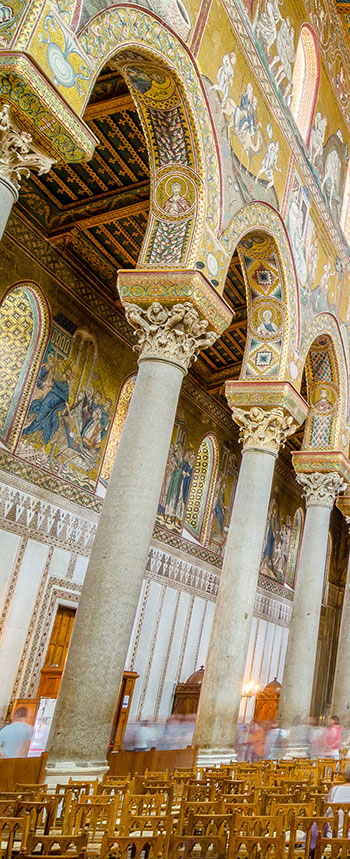




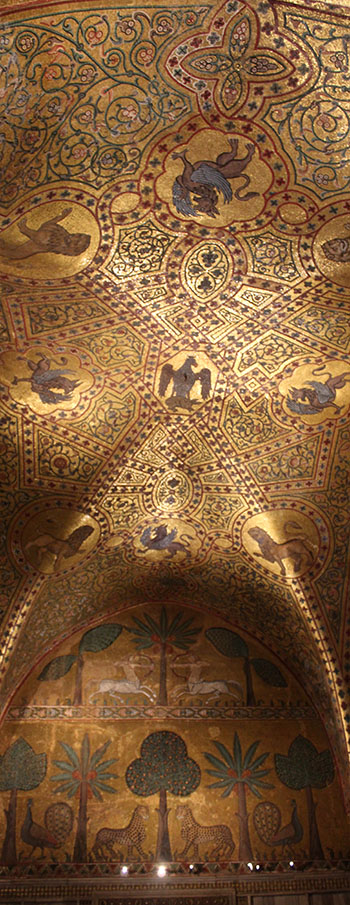



Byzantine Mosaics of Angels from Sicily
 Above are the Archangels Raphael on the left and Michael on the right.
Above are the Archangels Raphael on the left and Michael on the right.
There are three types of angels in the byzantine mosaics of Sicily based on how they are dressed. The first are Seraphim and Cherubim who are clothed in wings set with eyes. Next are angels dressed in neo-classical garments like tunics with bands of clavi and himations. Finally, there are angels dressed in jeweled robes that derive from the dress of the Imperial court in Constantinople. The most famous of the robes worn by the Byzantine emperors is called the Loros, which was worn at Easter in Hagia Sophia and a few times during the year for specific events. Being tied to Easter it is associated with the power of the resurrection. The loros was made in the Imperial Workshops that made clothes for the Emperor and his family. The Loros was very heavy and was made of silk that was thickly embroidered with real gold thread and set with pearls, jewels and enamels. Over time it became heavier and heavier and harder to move around in. The Norman Kings of Sicily wore the Loros, but it was not the only vestments worn by them and they developed their own royal fashions The Byzantine Artists who made the mosaics of Sicily were away from the court of Constantinople for a long time. As they made angels dressed in Loroses over several decades they made mistakes in how they depicted it, not having real examples before them. Eventually they break out of confines of the real Loos and simply make jeweled garments with stoles.
In Constantinople artists made hundreds of images of the emperors and their families every year. New pictures were composed when a son was crowned co-emperor or a new wife arrived. The Imperial court strictly controlled the iconography of these images and commissioned them to send to all of the Empire's cities, monasteries and also to important foreign courts. Often times these images showed the Emperor in the Loros and the court officials who supervised the production made sure they were right. Despite the huge production of these images almost none of them have survived.
The court images of angels in Sicily become very inventive and colorful as they evolve away from the controlled court restrictions in Constantinople. These designs and patterns become very ornate and we can see the artists are showing off what they can do in mosaic.
 Above is the Archangel Michael from Cefalu Cathedral in Sicily, below is the Archangel Gabriel from the same church.
Above is the Archangel Michael from Cefalu Cathedral in Sicily, below is the Archangel Gabriel from the same church.


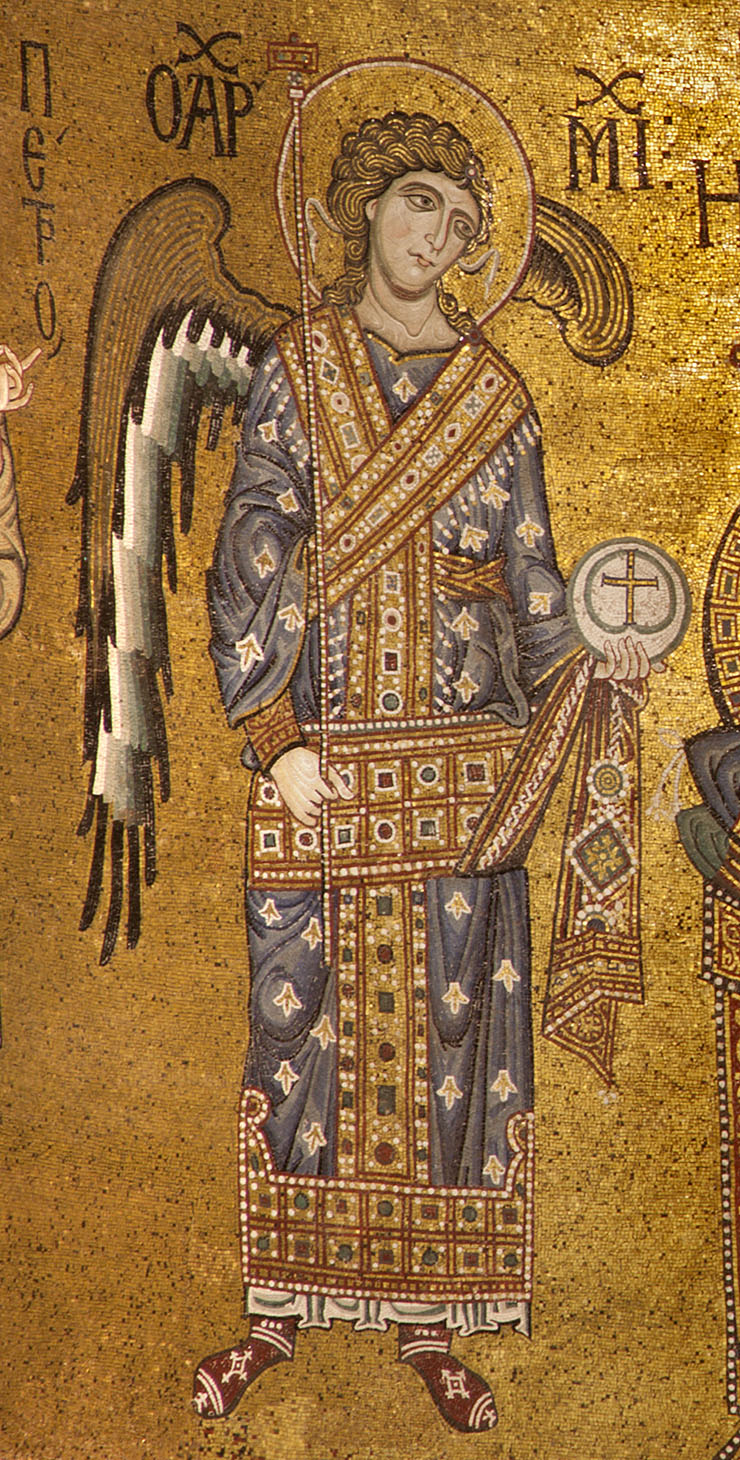
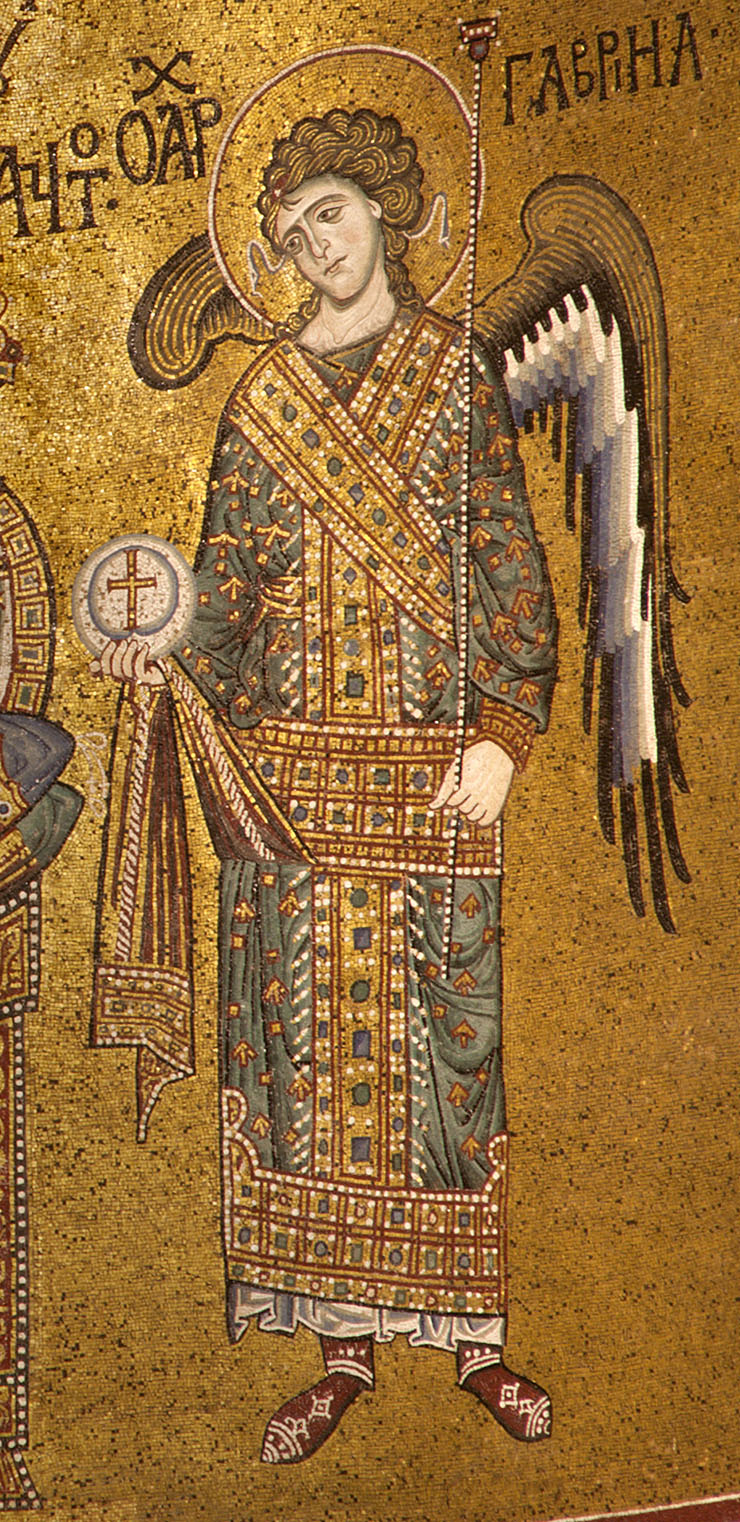
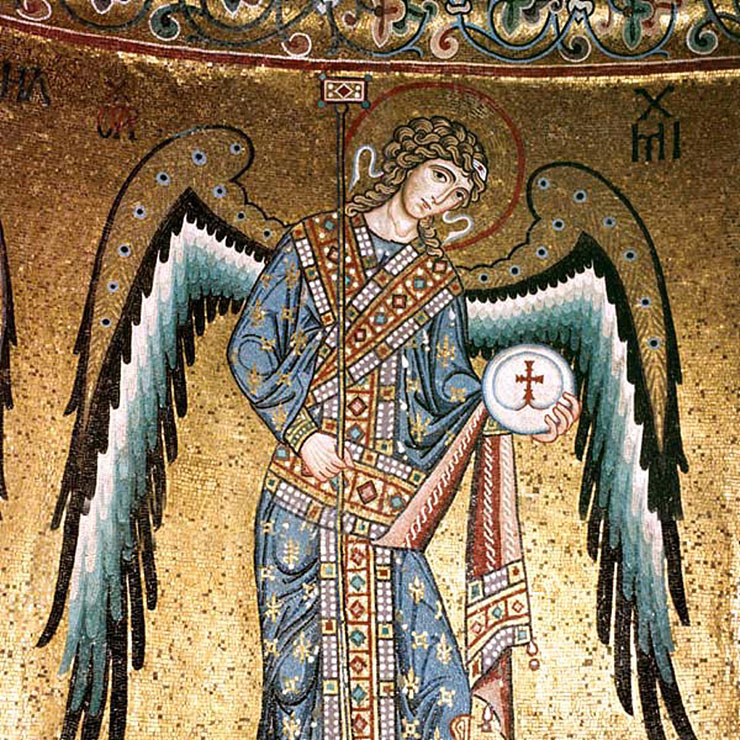


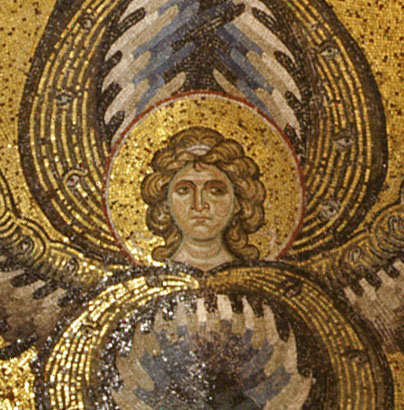

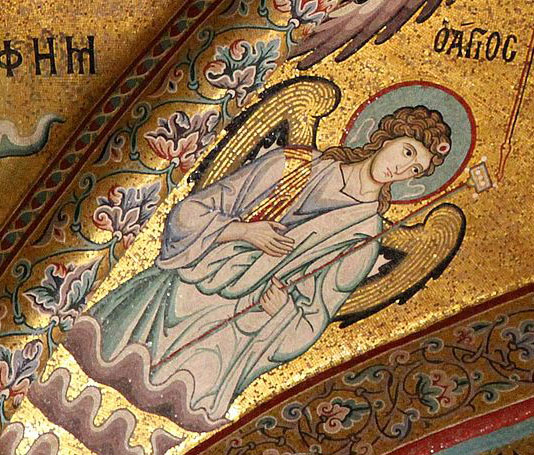



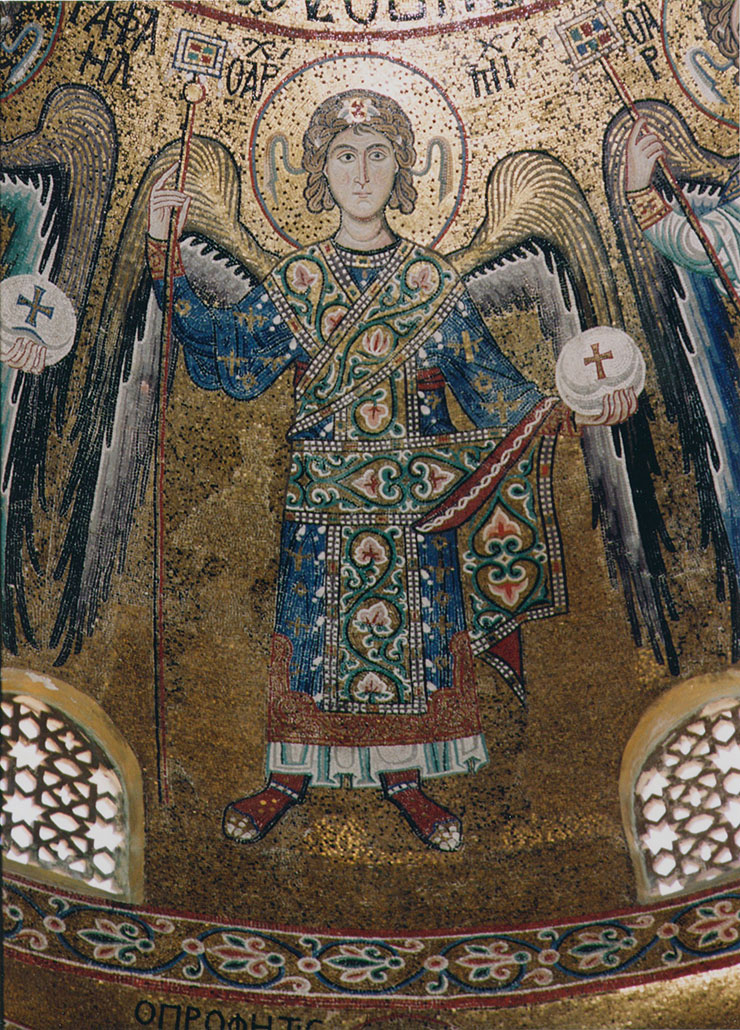





 click here for icons of christ
click here for icons of christ click here for icons of the theotokos
click here for icons of the theotokos click here for icons of angels
click here for icons of angels click here for icons of saints
click here for icons of saints








